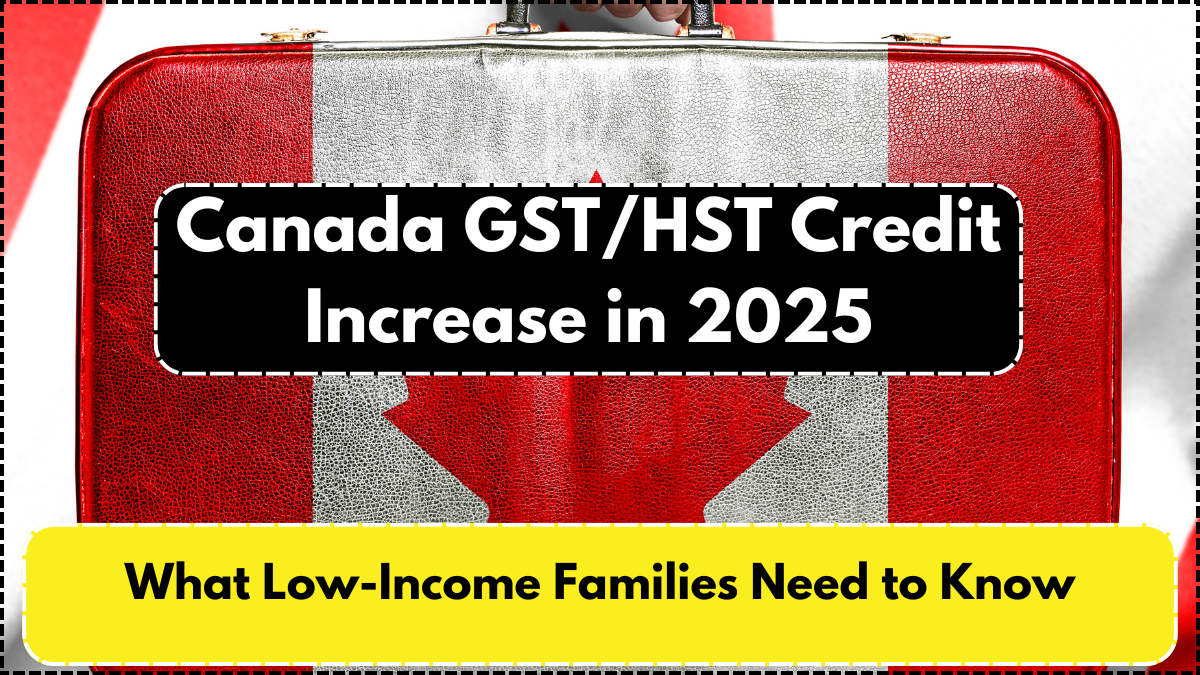In June 2025, the Canadian government is implementing a notable adjustment to its Goods and Services Tax/Harmonized Sales Tax (GST/HST) credit—a vital form of financial support for low-income earners. The GST/HST credit increase 2025 isn’t just a small bump; it’s a critical shift aimed at cushioning lower-income Canadians against rising living costs and economic uncertainty. The Canada Revenue Agency (CRA) has confirmed that this year’s increase is designed to reflect inflationary pressures and better address the realities faced by vulnerable households.
The GST/HST credit is a tax-free quarterly payment that helps individuals and families with low or modest incomes offset the sales tax they pay on goods and services. For 2025, adjustments to eligibility thresholds and payment amounts are expected to benefit more Canadians than ever.

How the 2025 GST/HST Credit Increase Affects Canadian Families
For millions of Canadian families, the new credit amounts provide more substantial relief. According to CRA updates as of June 2025, the annual credit will see a significant rise:
| Household Type | Previous Annual Credit | New 2025 Annual Credit | Increase Amount |
|---|---|---|---|
| Single Adult | $496 | $552 | +$56 |
| Married/Common-Law | $650 | $720 | +$70 |
| Each Child Under 19 | $171 | $198 | +$27 |
These amounts are indexed to inflation and aim to deliver real tax relief to low-income Canadians. The CRA has emphasized that the enhancements are automatic for those who have filed their 2024 tax return, with the first updated payments rolling out in July 2025.
Who Qualifies and What to Watch Out For
Eligibility is determined based on your 2024 income tax return. To receive the CRA low-income benefits under the increased GST/HST credit for 2025, you must:
- Be 19 years of age or older
- Be a resident of Canada for income tax purposes
- Meet the income thresholds outlined by the CRA
- File your tax return, even if you have no income
It’s important to ensure that your marital status, number of children, and address are up to date with the CRA to avoid delays or miscalculations. The CRA uses this data to determine your family net income, which is central to credit calculation.
Why the GST/HST Credit Increase 2025 Matters Now
The timing of this increase couldn’t be more critical. June 2025 has seen elevated costs in housing, groceries, and utilities. With inflation impacting essential spending, these quarterly credits offer a buffer for households already stretched thin.
What makes this credit especially relevant now is its ability to work in tandem with other government supports like the Canada Child Benefit and Climate Action Incentive. When combined, these programs represent a robust safety net for struggling families.
Maximize Your Benefits: Tips for Low-Income Canadians
Here are ways Canadian families can ensure they get the most out of this credit and related CRA low-income benefits:
- File taxes on time every year
- Use CRA MyAccount to track benefits and update information
- Seek community tax clinics if professional filing help is needed
- Review eligibility for other credits like the Canada Workers Benefit
Planning ahead and staying informed are key to fully benefiting from these programs. Remember, CRA communications are your best source for updates, and eligibility assessments are often automated based on tax return details.
FAQs
What is the GST/HST credit increase 2025?
The 2025 increase is a higher annual payment amount provided to eligible low-income individuals and families to help cover the GST/HST they pay throughout the year. The new figures reflect updated inflation metrics.
When will the new GST/HST payments begin?
The updated payments begin in July 2025 and will continue quarterly. You must file your 2024 income tax return to receive them.
Can I receive the credit if I have no income?
Yes. You need to file a tax return even with zero income to qualify.
How does this benefit coordinate with other government programs?
The GST/HST credit works alongside other CRA low-income benefits, offering a broader financial cushion when combined.
What if my marital status or number of children has changed?
You must update your information with the CRA immediately to ensure accurate benefit calculation.
Click here to know more.



